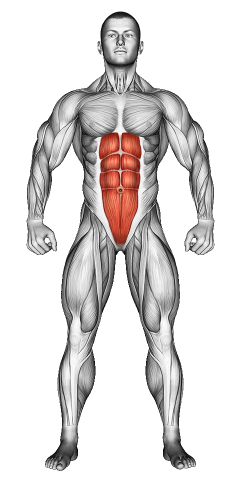Motion Side Plank: Video Tutorial & Exercise Guide

Written By: Claude Michael
Updated: Oct 13, 2024
| Workout | Motion Side Plank |
| Primary Muscle Group | Abs |
| Secondary Muscle Group | Shoulders |
| Equipment Required | Bodyweight |
| Force Type | N/A |
| Mechanics | Isolation |
| Exercise Type | Strength |
| Difficulty | Intermediate |
Motion Side Plank: Video Tutorial & Exercise Guide
- 1.Motion Side Plank: Muscle Groups
- -1.1Primary Muscle Group
- -1.2Secondary Muscle Group
- 2.Motion Side Plank: Step-by-Step Guide
- 3.Motion Side Plank: Overview
- 4.Motion Side Plank: Benefits
- 5.Motion Side Plank: Pro Tips & Advanced Techniques
- 6.Motion Side Plank: Progression Plan
- 7.Motion Side Plank: Frequently Asked Questions (FAQs)
Secondary Muscles Group
Motion Side Plank: Step-by-Step Guide
- Step 1: Start by lying on your side with your legs stacked on top of each other. Place your forearm directly beneath your shoulder, with your elbow at a 90-degree angle.
- Step 2: Engage your core and lift your hips off the ground to form a straight line from head to heels. Your body should be in a side plank position.
- Step 3: Slowly lower your hips towards the ground, hovering just above the floor without touching, and then lift them back up to the starting position.
- Step 4: Repeat this controlled motion, lifting and lowering your hips, while maintaining the side plank position. Focus on engaging your obliques and keeping your body aligned.
- Step 5: Switch sides and repeat for the desired number of reps, keeping proper form to avoid straining your lower back.
Motion Side Plank: Overview
The Motion Side Plank is a dynamic variation of the traditional side plank that targets the obliques, hips, and core. By adding a controlled lifting and lowering motion of the hips, this exercise increases the challenge, enhancing both strength and endurance in the side body muscles.
This exercise improves stability and balance by engaging the core, shoulder, and hip stabilizers. It's perfect for anyone looking to strengthen their core and obliques while also improving overall functional fitness and balance.
Motion Side Plank: Benefits
The Motion Side Plank is excellent for building core strength, particularly in the obliques and lower abs. It also helps to tone the hips and improves balance by engaging stabilizer muscles throughout the body.
This movement also enhances shoulder stability, as you support your bodyweight on one arm while controlling the hip motion. It’s a great exercise to include in your routine for improving posture, balance, and overall core strength.
Additionally, Motion Side Planks help with injury prevention by strengthening the muscles around your spine and hips, promoting better stability during functional movements.
Motion Side Plank: Pro Tips & Advanced Techniques
Focus on keeping your body in a straight line and avoid letting your hips sag as you lower them. To increase the intensity, hold a light dumbbell in your top hand or increase the range of motion by lifting your top leg. Remember to engage your core fully to maintain stability throughout the movement. Ready to strengthen your obliques and build core stability? Let’s get started with Motion Side Planks!
Motion Side Plank: Progression Plan
Beginner
Intermediate
Advanced
Motion Side Plank: Frequently Asked Questions (FAQs)
What muscles does the Motion Side Plank target?
+The Motion Side Plank primarily targets the obliques, but it also engages the core, shoulders, hips, and lower back for stability.
Is the Motion Side Plank suitable for beginners?
+Yes, beginners can perform this exercise with a smaller range of motion and focus on maintaining proper form. As strength and stability improve, they can increase the range of motion and reps.
How does the Motion Side Plank improve core strength?
+The added hip movement in the Motion Side Plank forces your obliques and core muscles to engage more intensely, building strength and endurance over time.
How often should I include Motion Side Planks in my workout routine?
+Incorporate Motion Side Planks 2-3 times per week as part of your core routine. They pair well with other plank variations or full-body stability exercises.
What common mistakes should I avoid during the Motion Side Plank?
+Avoid letting your hips sag or rotating your torso. Focus on keeping your body in a straight line and engage your core fully throughout the movement.
Can I make the Motion Side Plank more challenging?
Yes, you can hold a dumbbell in your top hand, lift your top leg, or slow down the movement for added difficulty and core engagement.
Share
Don’t Wish for It, Work for It – Join the FlexXP Newsletter Today!
Thank you for signing up for the FlexXP Newsletter!
This site is protected and the Google Privacy Policy and Terms of Service apply.

